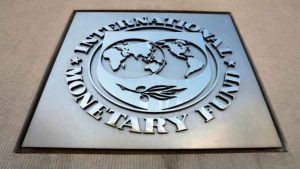Dr Owusu Afriyie Akoto, Minister of Food and Agriculture, says maize production in the country dipped in 2020 to a drought spell.
Droughts are events of prolonged shortages in surface water or groundwater.
He stated that the drought occurred during the major and minor seasons in the country’s breadbasket including Afram Plans in the Eastern Region, Kintampo in the Bono East Region and Ejura Sekyere-Odumasi in the Ashanti Region.
Dr Akoto who was speaking at a meet-the press series in Accra, described the drought as devastating, resulting in a decrease in national average yield from 3.8 metric tonne per hector in 2019 to 3.3 metric tonne per hector in 2020.
“I was a witness to this unfortunate event… The day before the 2020 general elections, I was driving from Kumasi to Ejura-Sekyedumase, on a mission. The shock I received after traveling past Mampong was that both left and right fields were brown. Ordinarily those should have been green at that time of the year. My heart was broken, ” he said.
The Minister attributed the drought to adverse effects of climate change, adding that the phenomena had caused other events such as floods that washed away major roads.
He noted that the drought had hiked
the price of maize, explaining however that the price in the country as compared to that in the sub-region was still low.
Dr Akoto said the government had taken steps to rehabilitate and construct irrigation facilities to ensure all year-round farming, as well as promote conservation agriculture among farmers
The Minister, commenting on the Planting for Food and Jobs (PFJ) policy, stated that the project had seen expansion in fertilizer and seed distribution.
He said trends in major staple crops including maize, rice and soybean had seen a sharp increase from 2017 to 2020 as a result of the policy, explaining that maize inched from 485,000 metric tonnes to 2,019,000 metric tonnes in 2020.
Dr Akoto recalled that, “Only 11 per cent of food crop farmers were using improved seeds. About 15 per cent of farmers using fertilizers at the rates of eight kilogram per Hector. ”
He noted that the use of fertilizer by farmers had shot up from 121,000 metric tonnes in the year 2017 to 423, 473 metric tonnes in the year 2020 under PFJ, disclosing that the target for this year was 520,000 metric tonnes.
On the use of certified seeds, he stated that through the initiative, the usage had increased from 4,400 metric tonnes to 29,500 metric tonnes with a target of pushing it higher to 40,000 metric tonnes.
“Majority of the seeds were locally produced by farmers and certified by the Plant Protection and Regulatory Services Directorate of the Ministry of Food and Agriculture. This is very impressive and has saved us a great deal,”he said.
Dr Akoto stated that to store surplus grains, the government had invested in the building of 80 warehouses with the capacity of 114,000 metric tonnes nationwide to augment the existing 27 with the capacity of 37,000 metric tonnes.
He said the government had begun the necessary steps to establish the Grain Development Authority to manage those facilities.
The Minister asserted that a study by Sahel et Afrique de l’oquest had revealed that Ghana was the only country among its neighbouring countries with stable food security.







